Black Drum.
Thanksgiving blessings to all. The holiday lies a few hours off. To central Florida fly fishers that should mean black drum begin appearing on shallow flats of the Banana River Lagoon.
We sight fish for these brutes, using seven-weight (some folks like more rod) fly rods with such flies as black Clouser Minnows, black bunny leeches, or Merkin crabs in brown. My preference is for size two hooks. a 1/5oth ounce lead eye. Weed guards are essential.
First you search for the fish. There are no guarantees you will find them. Sometimes it’s a long day, lots of water covered, nothing to show for it.
Sometimes, though, you hit the jackpot.
The best days for them are warm and sunny with little or no wind.
The water is cold though. You need waders unless you’re tough.
Many moons ago I brought one of my students, a seventh grader, fishing there. He had a brand new fly rod. This is the first fish he caught with it.
No one will mistake these fish for a bonefish or a rainbow trout. But they are probably the largest tailing fish in North America, reaching sizes over 100 pounds.
My good friend Rodney Smith and I had a banner day on drum one time.
Another good friend, Rick DePaiva, has had more luck there than anyone else I know.
Black drum should be on the flats until about Easter time. Make some time to get out there and pursue these unusual fish.
John Kumiski
http://www.spottedtail.com
All content in this blog, including writing and photos, copyright John Kumiski 2012. All rights are reserved.
|
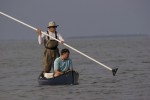
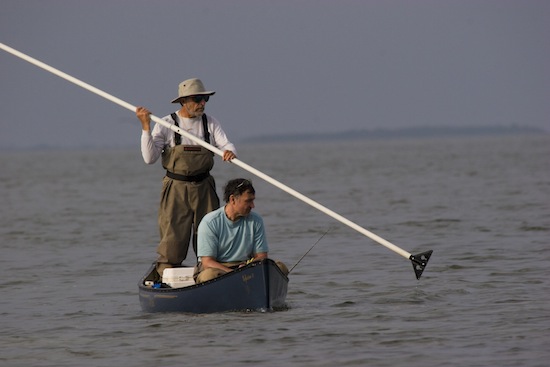
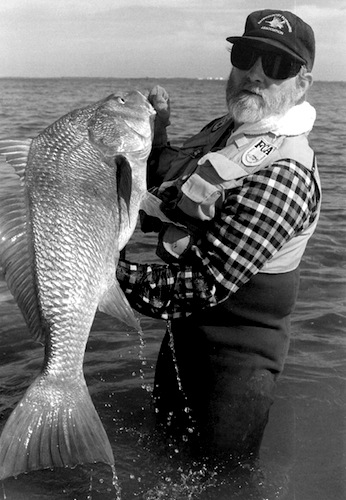
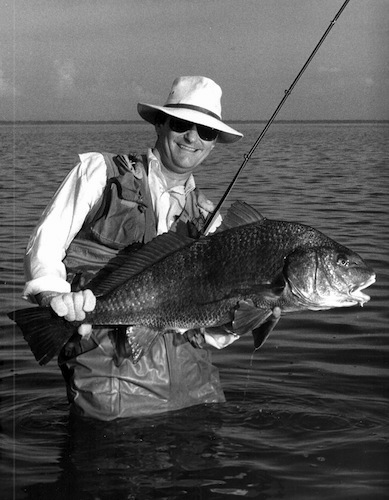
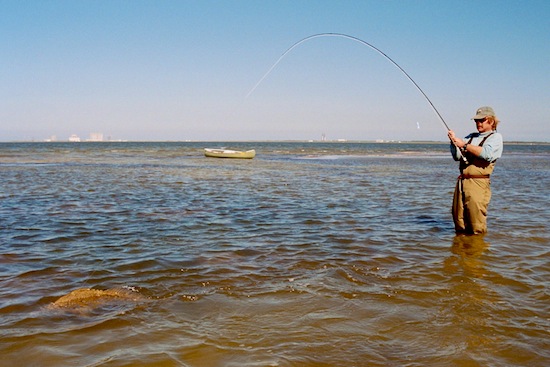
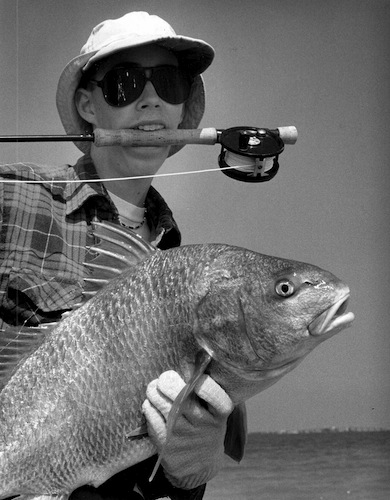
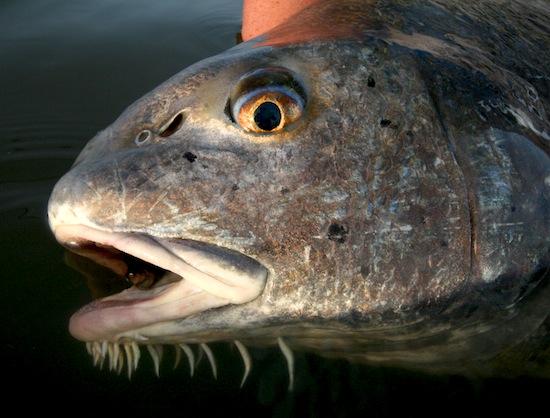

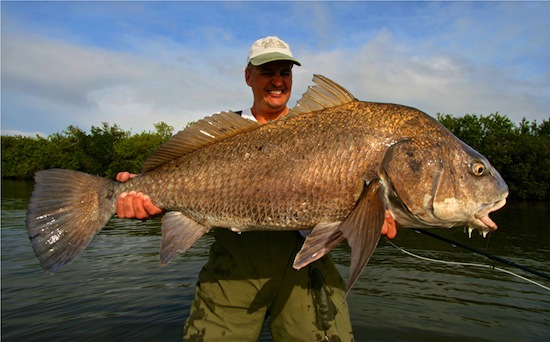
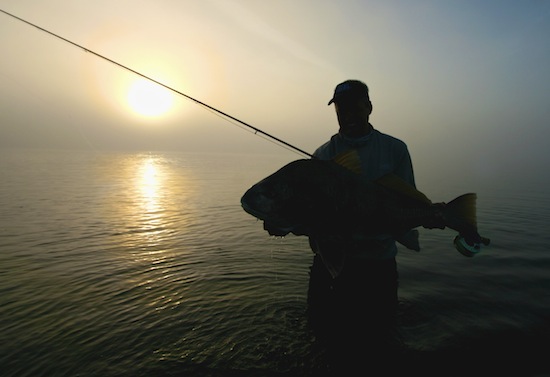
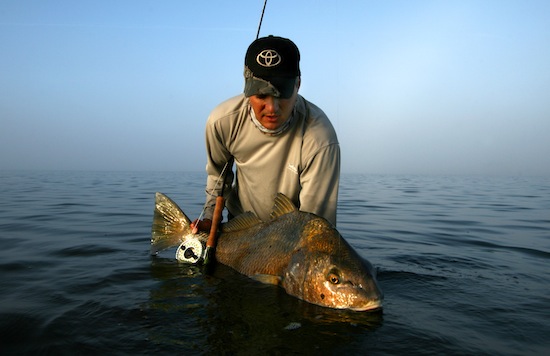
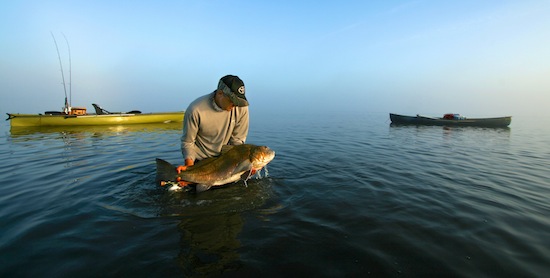
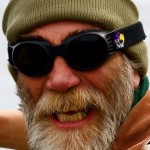
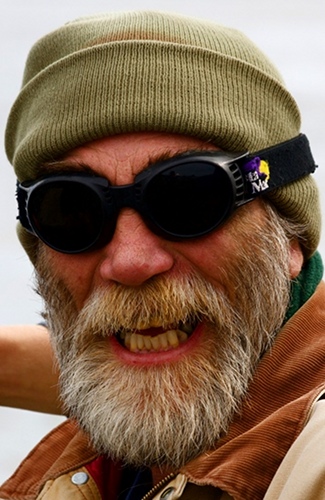
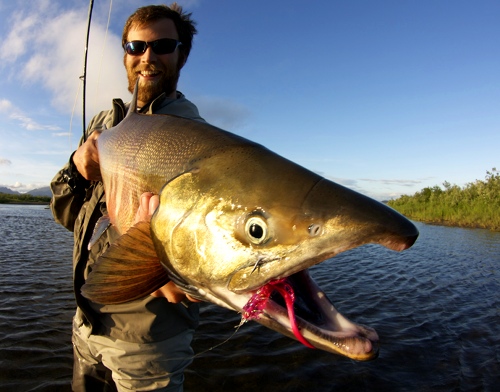
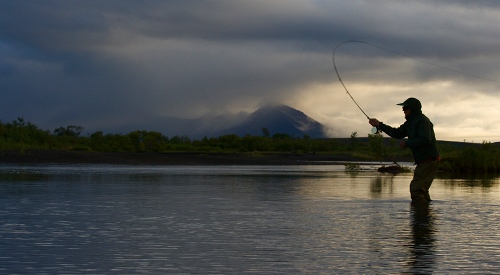
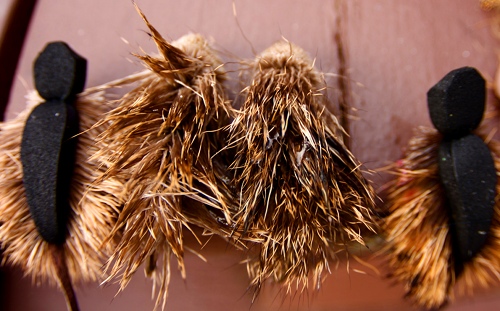
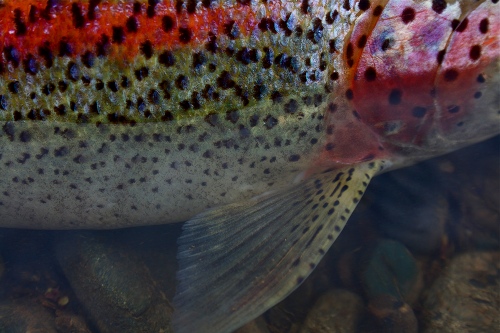
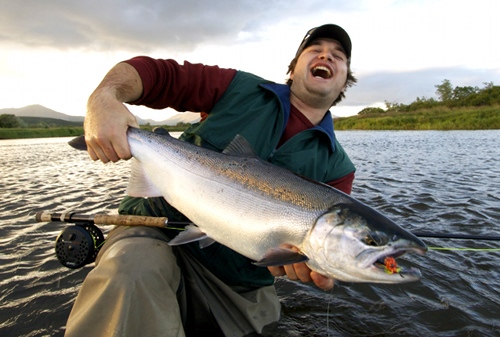
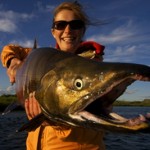
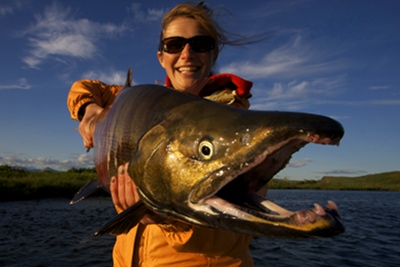
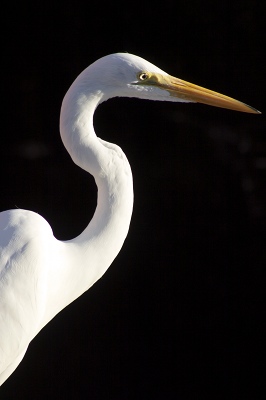
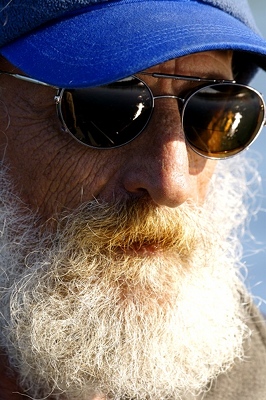
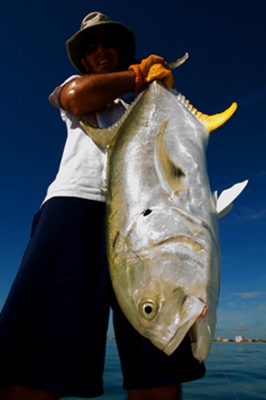
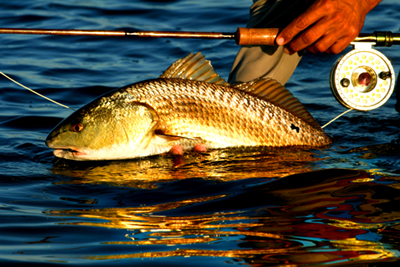
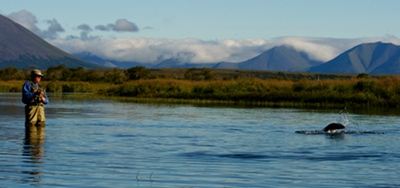
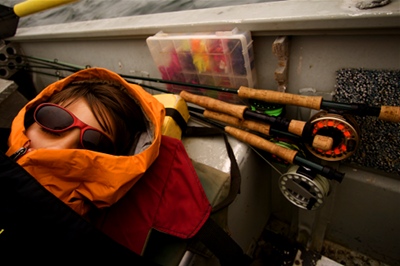
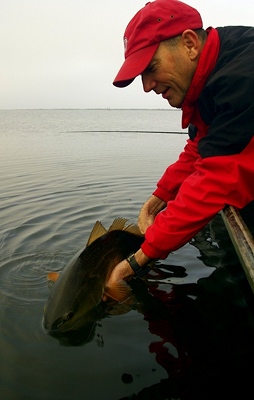
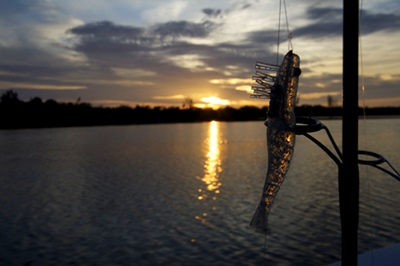
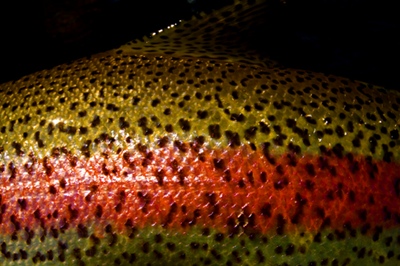
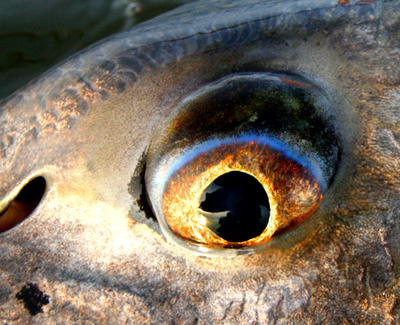
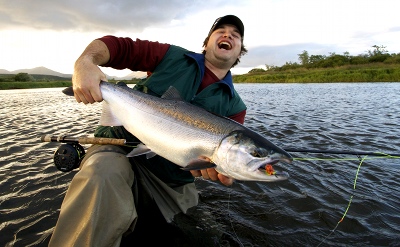
Recent Comments